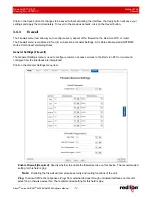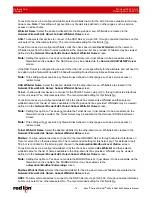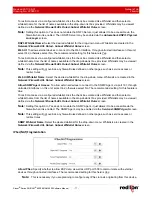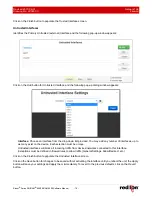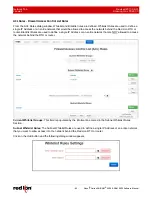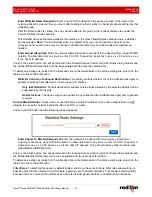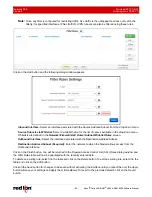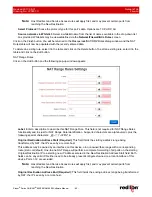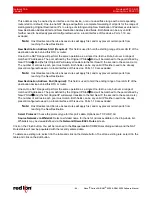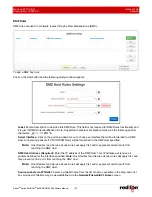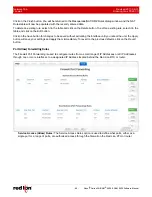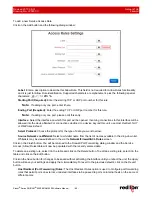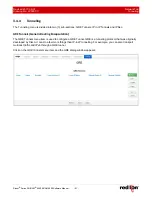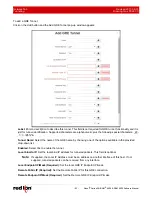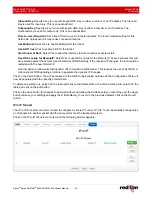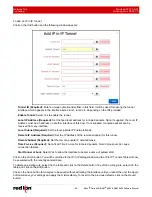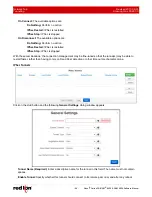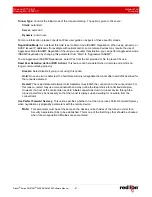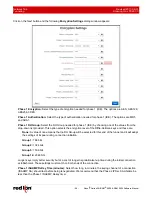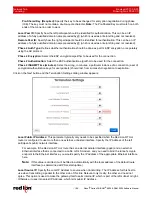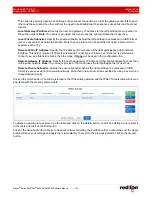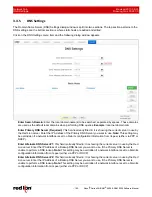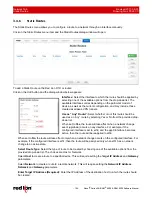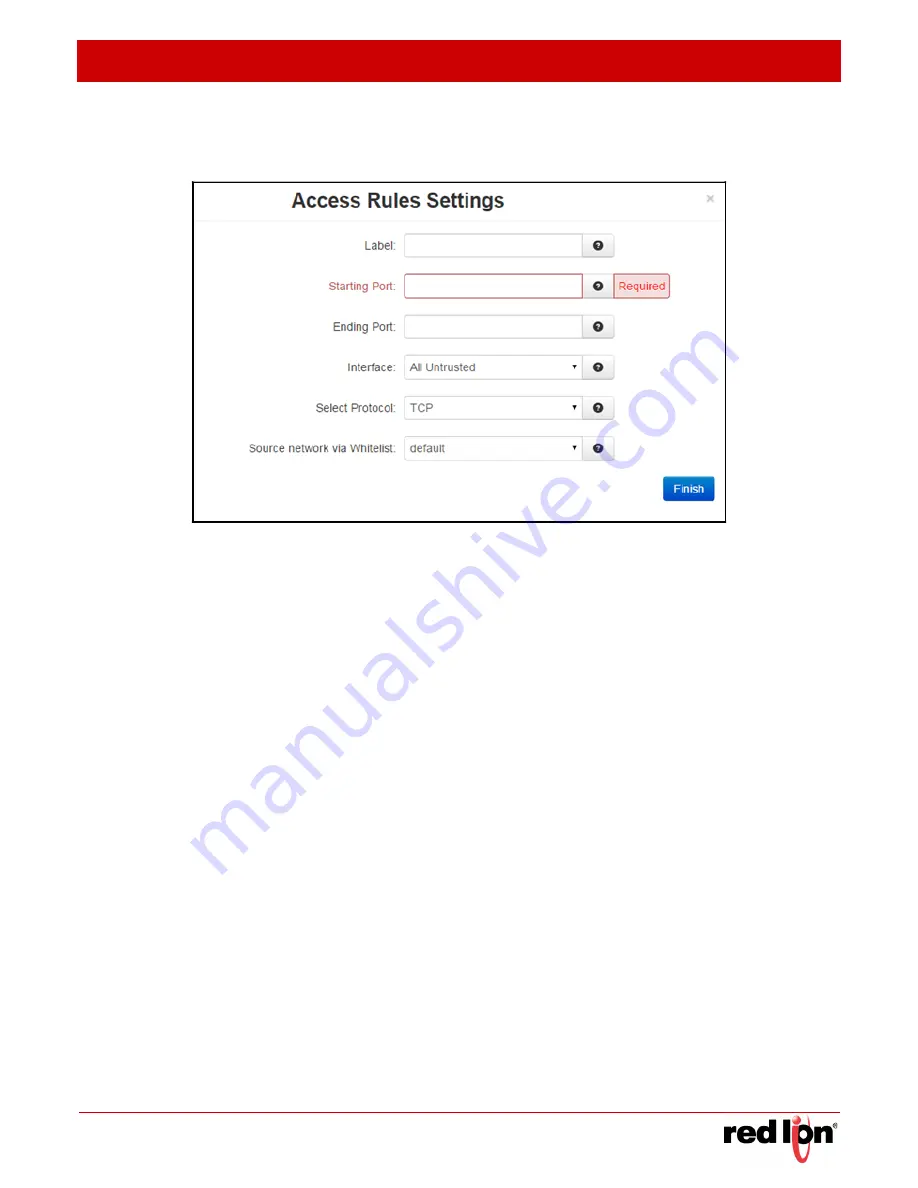
Revised 2017-08-31
Network Tab
Drawing No. LP0997-C
Firewall
Sixnet
®
Series SN/RAM
®
6000 & RAM 9000 Software Manual
- 89 -
To add a new Service Access Rule.
Click on the Add button and the following dialog window:
Label:
Enter a description to describe this Allow Rule. This field is not required for Allow Rules functionality
and it is just for Allow Rule identification. Supported characters are alphanumeric plus the following special
characters: _@-./',;:?~! #$%^&
Starting Port (Required):
Enter the starting TCP or UDP port number for this rule.
Note:
If adding only one port, enter it here.
Ending Port (Required):
Enter the ending TCP or UDP port number for this rule.
Note:
If adding only one port, please omit this entry.
Interface:
Select the interface on which this port will be opened. Incoming connections to this interface will be
allowed into the device.
Note:
For connections destined to a device beyond this unit, use Host Redirect, NAT
or DMZ rules instead.
Select Protocol:
Choose the protocol for the type of data you want to allow.
Source Network via Whitelist:
Select a whitelist name from the list of names available in the drop-down list.
Whitelists may be viewed/defined in the via the
Network/Firewall/ACL Rules
screen.
Click on the
Finish
button. You will be returned to the Firewall Port Forwarding dialog window and the Service
Access (Allow) Rules table will now be populated with the recently entered data.
To delete an existing rule, select it in the table and click on the
Delete
button. To edit an existing rule, select it in the
table and click on the
Edit
button.
Click on the
Save
button for changes to be saved without activating the interface until you reboot the unit, the
Apply
button will save your settings and apply them immediately. To revert to the previous defaults, click on the
Revert
button.
Host Redirect (Port Forwarding) Rules:
The Host Redirect Rules option is used to configure port forwarding
rules that permit ports on external, untrusted interfaces to be passed to ports on internal hosts on the same or
different ports.

